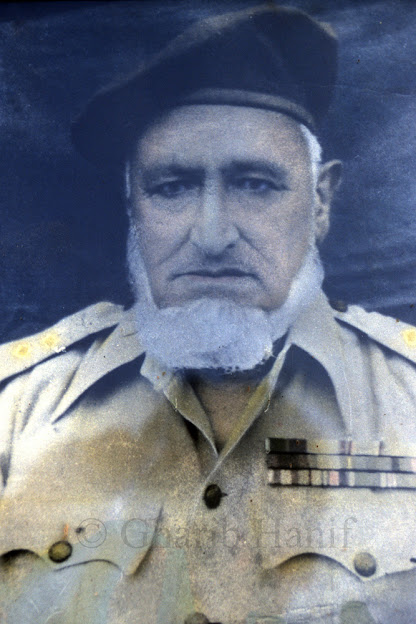Hast-o-Bood Part-30
Chapter IV
Historical background and brief overview of the
Historical background and brief overview of the
state of Jammu and Kashmir
When Raja Sahanspal graduated from the affairs of the empire, he began to take an in-depth look at the spread of Islam in the state and the tendencies of the people. Islamic brotherhood, tolerance, organization and morality greatly influenced him. Day by day meditation and interest attracted him to the true religion and he could not stay without reading the word. With his conversion to Islam, all the followers of Kotli converted to Islam. Raja Sahans Pal did not change his name despite becoming a Muslim. He built a settlement called Kotli Mangralan in the valley of Koh-i-Tali, at the foot of the mountain, to keep the memory of his great heir Raja Mahangarpal fresh. [1]. And with all his might he established a permanent capital for his future generations. The population grew day by day. On the death of Raja Sahans Pal, his four princes Raja Dan Khan, Raja Tatar Khan, Raja Kandahar Khan and Raja Janab Khan spread to different parts of the empire. Raja Dan Khan's son Raja Pritam Khan and his daughter Raja Sara Khan and his son Raja Raja Musaib Khan and then his son Raja Gaggar Khan settled various settlements and settlements. Tehsil Kotli is inhabited by Gagnagar Rai Rai Gaggar Khan.
These settlements include Rampatan, Badali, Kartot, Chowki Ming, Tharoch, Bratla, Chingpur, Khawas, Androt, Sarsawa, Panjira, Noi, Nain Sukh, Siah, Odhe Chhni, Saharmandi, Sarota, Kathar, Islamabad, Chachlar, Galhotis, Gharutas, Kalors, Dharas, Kharwats, Chuchhs and Namb are notable.
Kotli and Akhari are two settlements on the outskirts of Kotli Mangrallan which were the base of the Mangral rulers before Kotli was settled. Raja Sher Muhammad Khan Mangral of this place was martyred in Malik Bangash Bala [Peshawar, NWFP] with the help of his ally Gakhran Pharhana. His grandson Raja Muhammad Yar Khan Mangral is also a famous ruler of Kotli kingdom. His other great achievements include the construction of the Kotli Jama Masjid. A neighborhood of this settlement is named after him. The ruins of the palaces and other structures he built are on the other side of the Poonch River opposite the town of Kotli.
Raja Sheh Sawar Khan Mangaral was the son of Raja Muhammad Yar Khan, the ruler of the kingdom of Kotli Mangaral, at the time of the Sikh court in the state of Jammu and Kashmir. Sikh forces in Lahore under the command of Diwan Hari Chand attacked the area. Raja Sahib fought very fiercely. Other Mangral chiefs were fond of "Aap Raji" in their estates and had forgotten the importance of a sense of collective security. Unable to withstand the onslaught of the enemy on all sides, the Sikhs conquered the area in 1815 and Raja Shah Sawar was captured and brought to Lahore. Where he died in Sikh captivity. Thus the Mangral government was overthrown from the central location of Kotli.
The other notable kingdom of the kingdom was the region of Throch. The strong fort of Tharuchi was located on a vertical hill about a mile and a half above Gulpur. This area was the pride of the Mangral Rajput nation almost a century ago. In this area, the forces of Lahore led by Maharaja Ranjit Singh attacked under the leadership of Sikh Sardar Zorawar Singh. The Mangral chiefs, including Sardar Simt Khan, Sardar Karam Madi Khan Sakan Badali, Sardar Shadman Khan and Sardar Sattar Muhammad Khan, fought the Sikh forces under the leadership of Mirza Hashim Khan of Kajlani. But in addition to the scarcity of resources and food, the Sikh occupation of the surrounding area left them frustrated with the prospect of outside aid. Therefore, the Mangral army along with its above mentioned chiefs closed the fort. The Sikh forces continued the siege but the strength of the wall of Fort Tharoch and its presence on the high hill thwarted all its conquest plans and Sikh tactics. The Sikhs continued their siege of the fort and cut off all means of communication and food from the outside world for forty days.
On which the people of the fort were forced to surrender. Thus in Bakrami 1908 this last sign of the Mangral government also came to an end and every member of the nation began to see the interpretation of this poem of Allama Iqbal.
Heart to heart, look at the lesson of today
Shaheed Jalwa Farda, fresh constitution
Shaheed Jalwa Farda, fresh constitution
Although the Sikh rule in the state came to an end with the fall of the Lahore Empire, the Treaty of Amritsar affirmed the enslavement of Muslims in the state of Jammu and Kashmir and proved the point of change of masters.
He was dying from a calamity
Fell and how is this my new god
Fell and how is this my new god
to be continued ....
[1] ... History of the Punjab Hills State Volume 2, by J. Aitchison and J. P. H. Vogel, pages 46, 49, 89.
[2] ... History of the Punjab Hills State Volume 2, by J. Aitchison and J. P. H. Vogel, page 91.
Note: Blogger does not necessarily agree with the text of the book.



Comments
Post a Comment